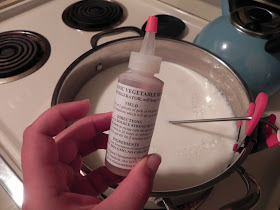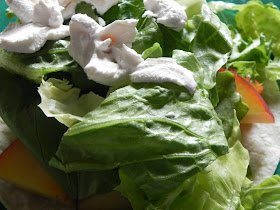 |
| Grand Teton National Park |
During the epic road trip I recently took and also wrote about here, I decided to detour in such a way that I could visit Grand Teton National Park (and while I was nearby, Yellowstone so I could see Old Faithful, because why not?). I'm thankful that my travel plans worked out in such a way that I was able to stay in Jackson for a day and a half, so I would have time to actually explore Grand Teton.
 |
| Grand Teton again |
We would up at Lotus Cafe around 9 p.m., and our server was also the owner. She shared that she wanted to start a gluten-free (primarily, they do have glutenous homemade whole wheat bread and other items) restaurant because 1) there was the demand for it and 2) she couldn't eat gluten and struggled to find places. Most of the menu items could be made both gluten-free and vegan (or came that way with no option), though you could add meat (chicken, fish, bison, pork -- all organic) to most meals (or, if you preferred tempeh or French lentils).
That evening, we split a 10" morel and spinach pizza, on a very thin and crispy rice crust, and a salad (baby spinach, dried cranberries, red cabbage slaw, feta cheese, cinnamon candied walnuts, & blackberry-balsamic vinaigrette). Delicious and served quickly. For dessert, we split a carrot cake (walnuts, dates, cardamom, & cinnamon, topped with coconut cardamom sauce). Heavenly.
Since switching to a (mostly) gluten-free diet, I've struggled to find things in restaurants I can eat--but it's worth it because my stomach's no longer upset, my joints don't hurt, and I'm not tired all the time among other things. So, I told my travel companion, this was the restaurant we were eating at while we were in Jackson. In the morning, we went back and got:
- A rice-flour based gluten-free muffin with peaches and crystalized ginger (from the day-old rack, which we stuck in my pack for a mid-day, post morning hike snack).
- Rawnola (oh my god, I didn't think I could have granola without gluten-free oats, now I'm trying to get my hands on a food dehydrator so I can make this from time to time without running the oven forever--recipe to come if I do) topped with coconut and almonds and served with rice milk
- The Deluxe breakfast sandwich (egg, Daiya cheddar, baby spinach, ancho chili sauce, roasted garlic aioli, and homemade veggie patty sausage--brown rice, french lentils, spices)
 |
| Storm in the Tetons (after Old Faithful viewing) |
My travel companion ordered coffee (it was served weak) and I ordered the chai. Go with the chai. It's strongly flavored was perfectly steeped both mornings I had it--and was lovely in the near-freezing morning air (despite August) the first morning we were in Jackson.
 |
| Old Faithful |
We hiked and took pictures in the morning and then drove to Yellowstone to see Old Faithful, which isn't quite so faithful any longer. It erupts about every 93 minutes, give or take 10 and even with that allowance it went off about 10 minutes later than predicted. On our drive back, we saw bison at the edge of Grand Teton and a fantastic thunderstorm--a tree exploded within 20 feet of the road on our drive back. We ate the muffin (delicious) and a few snacks we had in the car, but didn't really eat much during the day. That night, we ordered the Bombay Bowl, a bowl of black bean soup, and an order of gluten-free garlic naan (sooo tender, i wish I knew how to make naan like this). Again, a delicious meal. Since we were both pretty hungry--hunger headaches had already set in--and Lotus Cafe was crowded, I also ordered a crimson (beet, green apple, ginger, & carrot) juice that we split to help tide us over.
Even with the crowd, we got our food moderately quickly. One of the things we noticed and appreciated about the Lotus Cafe is that everyone does everyone else's job on the floor. We had a wait person who was assigned our table, of course, but we never had an empty water glass, our finished dishes were cleared promptly, and at least three people verified we didn't need anything else.
 |
| More Tetons! |
Breakfast the first morning stood out, compared to breakfast the second morning--which was also tasty, but we weren't as hungry and the meal didn't seem as innovative. The blue-corn flapjacks are tasty and The Custom makes a fun alternative to the typical American (sweets, carbs) breakfast and would work well as a mid-day meal as well.
But: long story short, I'd go back to Lotus Cafe (and Jackson, especially Jackson). Any time.
For more pictures of Wyoming and the Tetons (as well as some tasty recipes), you can also visit my friend Annie's blog. She had the opportunity to go capture and tag butterflies there this summer and right before we both moved, I made her promise to show me pictures. We didn't get to it (sad!), but hopefully I'll see the rest of the pictures soon.





















